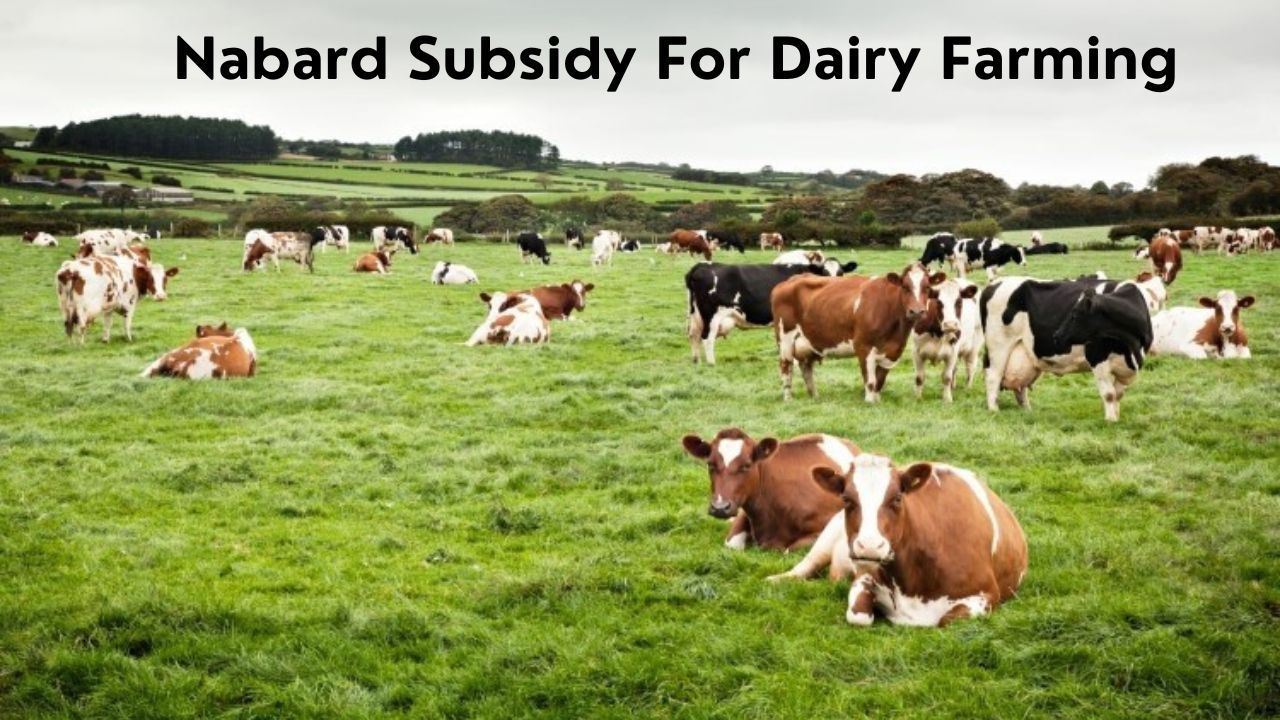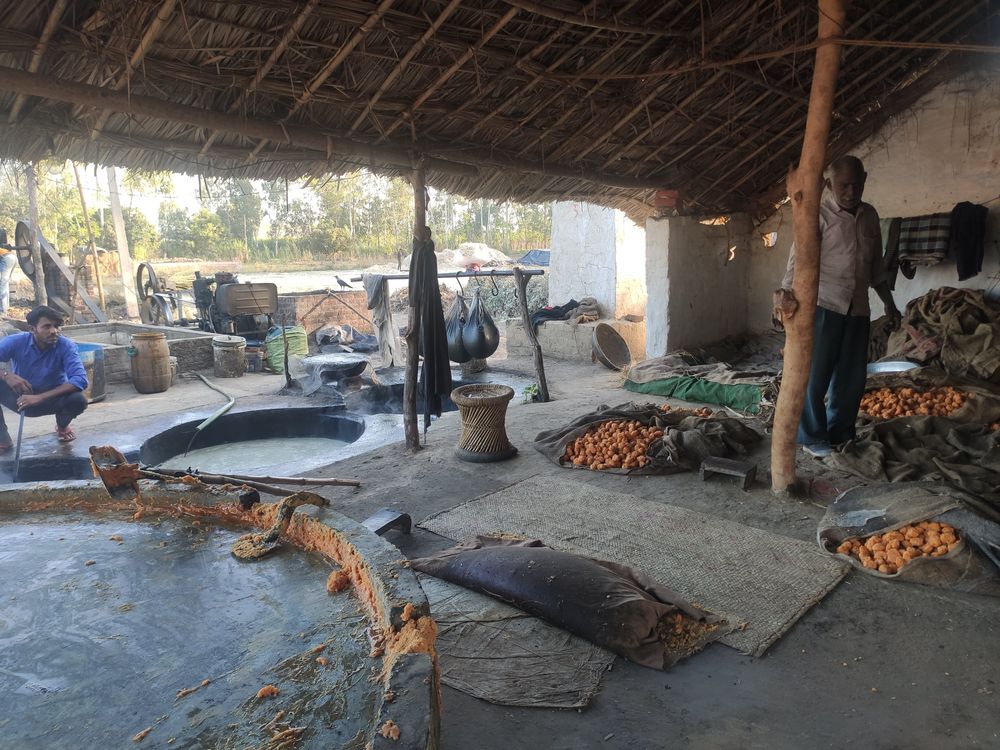Introduction
- Dairy entrepreneurship has emerged as a significant avenue for rural development and economic empowerment in India. With the potential to generate sustainable livelihoods and bolster rural economies, dairy farming stands as a pillar of agricultural entrepreneurship. Recognizing its importance, the National Bank for Agriculture and Rural Development (NABARD) has initiated the Dairy Entrepreneurship Development Scheme (DEDS). This scheme aims to provide financial assistance and support to individuals and organizations engaged in dairy farming, fostering growth and prosperity in the sector.
NABARD Subsidy for Dairy Farming Overview:
Objectives of the Scheme:
The Dairy Entrepreneurship Development Scheme (DEDS) initiated by NABARD encompasses several key objectives, including:
- Promotion of Modern Dairy Farms: The scheme aims to incentivize the establishment of modern dairy farms equipped with advanced infrastructure and technology. By encouraging the production of clean milk through modern farming practices, NABARD seeks to enhance productivity and quality standards in the dairy sector.
- Encouragement of Heifer Calf Rearing: Recognizing the significance of breeding stock conservation, the scheme emphasizes the rearing of heifer calves. By promoting heifer calf rearing initiatives, NABARD aims to ensure the availability of superior breeding stock, thereby enhancing the genetic potential of dairy animals across the country.
- Facilitation of Village-Level Milk Processing: One of the primary objectives of the scheme is to facilitate structural changes in the unorganized sector, enabling the initial processing of milk at the village level. By promoting decentralized milk processing units, NABARD aims to empower rural communities and create value-added opportunities for dairy farmers at the grassroots level.
- Upgradation of Technology and Quality Standards: The scheme endeavors to facilitate the upgradation of traditional dairy farming practices and technology to meet commercial-scale requirements. By fostering the adoption of modern techniques and quality standards, NABARD seeks to enhance the competitiveness of Indian dairy products in domestic and international markets.
- Generation of Self-Employment Opportunities: A key focus of the scheme is to generate self-employment opportunities, particularly in the unorganized sector. By providing financial assistance and infrastructure support, NABARD aims to empower individuals and groups engaged in dairy farming activities, thereby fostering entrepreneurship and rural economic development.
NABARD Dairy Farming Subsidy Eligibility:
The NABARD Dairy Farming Subsidy is available to various types of individuals and associations, including:
- Farmers
- Individual Entrepreneurs
- NGOs
- Companies
- Groups of the unorganized and organized sectors
Groups of the organized sector encompass entities such as Self Help Groups, Dairy Cooperative Societies, Milk Unions, Milk Federations, etc.
However, there are certain eligibility criteria and conditions to be met:
- An individual can avail of the dairy subsidy for all components under the scheme but only once for each component.
- If multiple members of a family wish to avail the subsidy, they must establish separate units with distinct infrastructure at different locations. These locations should be at least 500 meters apart.
NABARD Dairy Farming Subsidy Schemes:
1. Establishment of Small Dairy Units
- Type: Establishment of small dairy units with crossbred cows/indigenous descript milch cows like Sahiwal, Red Sindhi, Gir, Rathi, etc./graded buffaloes up to 10 animals.
- Investment: Rs 5.00 lakh for a 10 animal unit (minimum unit size: 2 animals, upper limit: 10 animals).
- Subsidy: 25% of the outlay (33.33% for SC/ST farmers) as back-ended capital subsidy subject to a ceiling of Rs 1.25 lakh for a unit of 10 animals (Rs 1.67 lakh for SC/ST farmers). Maximum permissible capital subsidy is Rs 25,000 (Rs 33,300 for SC/ST farmers) for a 2 animal unit. The subsidy is pro-rated based on the unit size.
2. Rearing of Heifer Calves
- Type: Rearing of heifer calves – crossbred, indigenous descript milch breeds of cattle and graded buffaloes – up to 20 calves.
- Investment: Rs 4.80 lakh for a 20 calf unit (minimum unit size: 5 calves, upper limit: 20 calves).
- Subsidy: 25% of the outlay (33.33% for SC/ST farmers) as back-ended capital subsidy subject to a ceiling of Rs 1.20 lakh for a unit of 20 calves (Rs 1.60 lakh for SC/ST farmers). Maximum permissible capital subsidy is Rs 30,000 (Rs 40,000 for SC/ST farmers) for a 5 calf unit. The subsidy is pro-rated based on the unit size.
3. Vericompost
- Type: Vericompost (with a milch animal unit. To be considered with milch animals and not separately).
- Investment: Rs. 20,000/-
- Subsidy: 25% of the outlay (33.33% for SC/ST farmers) as back-ended capital subsidy subject to a ceiling of Rs 5,000/- (Rs 6,700/- for SC/ST farmers).
4. Purchase of Equipment
- Type: Purchase of milking machines/milk testers/bulk milk cooling units (up to 2000 lit capacity).
- Investment: Rs 18 lakh.
- Subsidy: 25% of the outlay (33.33% for SC/ST farmers) as back-ended capital subsidy subject to a ceiling of Rs 4.50 lakh (Rs 6.00 lakh for SC/ST farmers).
5. Dairy Processing Equipment
- Type: Purchase of dairy processing equipment for the manufacture of indigenous milk products.
- Investment: Rs 12 lakh.
- Subsidy: 25% of the outlay (33.33% for SC/ST farmers) as back-ended capital subsidy subject to a ceiling of Rs 3.00 lakh (Rs 4.00 lakh for SC/ST farmers).
6. Establishment of Facilities
- Type: Establishment of dairy product transportation facilities and cold chain.
- Investment: Rs 24 lakh.
- Subsidy: 25% of the outlay (33.33% for SC/ST farmers) as back-ended capital subsidy subject to a ceiling of Rs 6.00 lakh (Rs 8.00 lakh for SC/ST farmers).
7. Cold Storage Facilities
- Type: Cold storage facilities for milk and milk products.
- Investment: Rs 30 lakh.
- Subsidy: 25% of the outlay (33.33% for SC/ST farmers) as back-ended capital subsidy subject to a ceiling of Rs 7.50 lakh (Rs 10.00 lakh for SC/ST farmers).
8. Veterinary Clinics
- Type: Establishment of private veterinary clinics.
- Investment: Rs 2.40 lakh for the mobile clinic and Rs 1.80 lakh for the stationary clinic.
- Subsidy: 25% of the outlay (33.33% for SC/ST farmers) as back-ended capital subsidy subject to a ceiling of Rs 60,000/- and Rs 45,000/- (Rs 80,000/- and Rs 60,000/- for SC/ST farmers) respectively for mobile and stationary clinics.
9. Dairy Marketing Outlets
- Type: Dairy marketing outlet / Dairy parlour.
- Investment: Rs 56,000/-
- Subsidy: 25% of the outlay (33.33% for SC/ST farmers) as back-ended capital subsidy subject to a ceiling of Rs 14,000/- (Rs 18,600/- for SC/ST farmers).
How to Get NABARD Subsidy for Dairy Farming:
Steps to Obtain NABARD Subsidy for Dairy Farming
Step 1: Determine Business Activity
- Decide which type of dairy farming activity you intend to establish from the options provided by NABARD.
Step 2: Entity Registration
- Register a suitable business entity such as a company, NGO, or any other appropriate form.
Step 3: Prepare Detailed Project Report
- Create a comprehensive project report or business plan for the dairy farm, including a loan request, outlining the investment required and expected outcomes.
Step 4: Apply for Bank Loan
- Submit a loan application to a commercial bank, regional rural bank, state cooperative bank, or other eligible financial institutions for refinancing from NABARD.
Step 5: Loan Sanction and Implementation
- Upon loan approval, implement the project using the sanctioned loan amount along with the promoter's contribution.
Step 6: Bank Applies for NABARD Subsidy
- Once the bank disburses the first loan installment, it must apply to NABARD for the sanction and release of the subsidy for dairy farming.
Step 7: Subsidy Release
- NABARD releases the subsidy amount to the bank, which holds it in a designated "Subsidy Reserve Fund Account" without accruing interest.
Step 8: Subsidy Adjustment
- The subsidy amount in the Subsidy Reserve Fund Account is adjusted against the final loan repayments by the promoter, provided that loan obligations are satisfactorily met.
Note: Loan sanctioning authority, interest rates, tenure, and collateral requirements are determined by the respective bank.
Conclusion:
- In conclusion, the NABARD subsidy for dairy farming under the Dairy Entrepreneurship Development Scheme is a catalyst for rural development and economic empowerment. By providing financial assistance and support to dairy entrepreneurs, NABARD aims to enhance productivity, profitability, and sustainability in the dairy sector. Through inclusive policies and targeted interventions, NABARD continues to play a pivotal role in fostering growth and prosperity in Indian agriculture.
FAQs:
Is NABARD subsidy available for dairy farming?
- Yes, NABARD offers subsidies for dairy farming projects to promote the dairy sector's development and enhance milk production.
The subsidy can cover various aspects such as the purchase of cattle, infrastructure development, and technological upgrades.
Which are the schemes offered by NABARD?
- NABARD offers schemes like Dairy Entrepreneurship Development Scheme (DEDS) for dairy farming, Dairy Processing and Infrastructure Development Fund (DIDF) for modernization, and the Dairy Entrepreneurship Development Scheme (DEDS) for promoting entrepreneurship in the dairy sector.
What are the major schemes of dairy development?
- NABARD offers schemes such as the Rashtriya Gokul Mission (RGM), National Livestock Mission (NLM), Dairy Infrastructure Development Fund (DIDF), and Animal Husbandry Infrastructure Development Fund (AHIDF), among others, to support various aspects of livestock and dairy development in India.
What are the objectives of NABARD scheme for dairy sector?
- The scheme also targets the modernization of traditional dairy technology for commercial-scale operations, aiming to deliver high-quality dairy products at accessible prices, create employment opportunities in rural and urban areas, and enhance the viability of small dairy units, ultimately boosting dairy farmers' income.
Which is the largest dairy development Programme?
- The National Programme for Dairy Development (NPDD) is the largest dairy development program in India, aiming to enhance milk production, improve milk processing infrastructure, and promote dairy entrepreneurship nationwide. Implemented by the Government of India, NPDD plays a pivotal role in fostering growth and sustainability within the dairy sector.
Which is the largest dairy development Programme?
- The White Revolution, also known as Operation Flood, initiated on January 13, 1970, stands as the globe's most extensive dairy development program and a monumental undertaking by India's National Dairy Development Board (NDDB).
We hope that you like this content and for more such content Please follow us on our social site and YouTube and subscribe to our website.
Manage your business cash flows and payable/receivables using our Bahi Khata App


